 |
: May 2005 |
||||||||
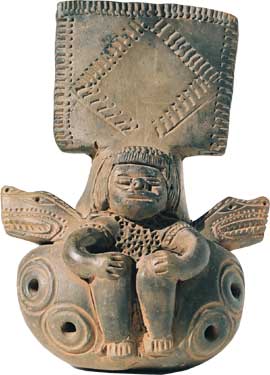 H: 15; L: 11; l: 7 cm |
Discovery context: The photos of the whistles presented here were communicated by Mr J. D. when he discovered this web site. He bought those whistles in Venezuela in the town of Caracas in 1978 or 1980. Even if this site is dedicated to the European whistles, those clay whistles from South America are interesting because they are good examples of two hypothesis of this study:
|
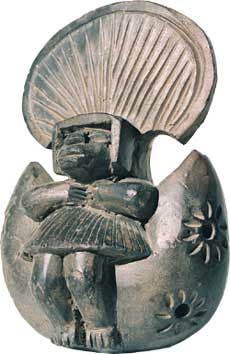 H: 13; L: 9.5; l: 7 cm |
|||||||
|
Analysis: Those whistles are seated figures. One whistle is a man with a tunic seated on a two-headed snake, the other one is a woman wearing a skirt seated on a crescent of the moon. The man has a large square hat and the woman a circular one.
The two other whistles are seated naked man and woman. The decorationr:The whistles are in a dark brownish ceramic. The clay is very micaceous. They are moulded and decorated with lines and points. The typology: From an organological point of view, they are globular flutes. The mouthpiece is at the top of the heads and hats and the window is behind the neck. With four playing holes, you can play five tones (C D# E F# G). |
|||||||||
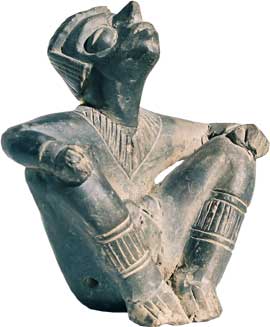 H: 14.5; L: 13; l: 8 cm |
The permanent shapes: Even for a nonspecialist of the Precolumbian antiquity, the continuity of those figurines with the Inca and Caribbean statues is obvious. The position of the figures and the stylisation of the features are so similar to pre-Hispanic objects that you first think to a touristic reproduction of antic whistles.
|
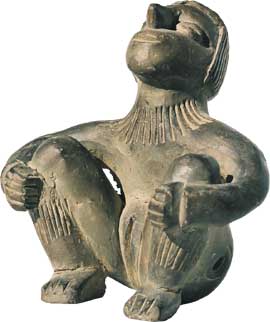 H: 11.5; L: 11; l: 8 cm |
|||||||
|
What makes those whistles so interesting is that they were sold on the market in Caracas during a feast. They were not sold as a reproduction of antic items but as whistles used by the inhabitants for a special occasion.
|
|||||||||
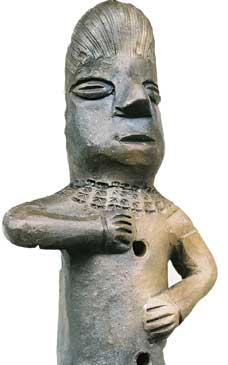 H: 17; L: 7.6; l: 8.8 cm |
From rites to folk traditions: So many whistles and globular flutes were found nearly intact in the archaeological dugs in pre-Hispanic sites that nowadays, the most commonly held theory is that they were used for religious ceremonies. Our modern whistles are still used in a ceremony because they are sold as traditional wedding gifts for the engaged couple. This explains that they represent couples: the man and the woman were offered respectively so that each one can play a seduction game with it.
The symbolic sense of fertility for the whistles is so primary that it is not so unusual to discover a folk tradition wich exists also in Alsace or Provence.
|
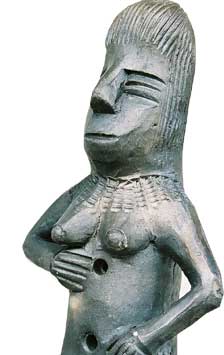 H: 16; L: 6; l: 9 cm |
|||||||